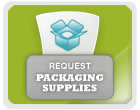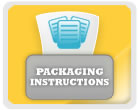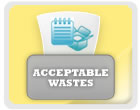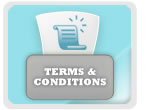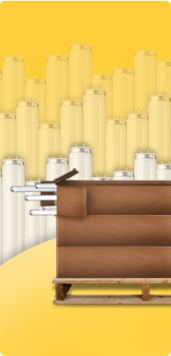 |
|
 |
Pallet-Load Recycling Packaging Instructions (rev. 04-01-09)
LAMPS
Markings/Descriptions/Shipping Papers
- Container must be marked with an accumulation date. Containers must be shipped within one (1) year from accumulation date. Each container of intact lamps must be marked: "USED MERCURY LAMPS FOR RECYCLING or UNIVERSAL WASTE MERCURY LAMPS”. (See 40 CFR Part 273)
- Each container of unintentionally broken lamps must be marked “BROKEN UNIVERSAL WASTE MERCURY LAMPS”. (Maine: Special requirements may apply)
- Each container of crushed lamps must be marked either as “CRUSHED UNIVERSAL WASTE LAMPS FOR RECYCLING” or, if designated as a HAZWASTE, marked, packaged and shipped (manifested) in compliance with all hazardous waste regulatory requirements. Individual states designate crushed lamp status.
Storage
- Do not store lamps outside without protection or allow boxes to get wet or damaged. Non-sealed, damaged or wet boxes will not be accepted for transport.
Containers
- Intact lamps must be packaged in cardboard boxes or fiber drums with the openings secured to prevent breakage. The easiest and most efficient method of packaging spent lamps for recycling is simply to put the old lamp back into the new lamp box as you replace them. Do not place the eggshell separators back in the box. Do not mix different types of lamps together. Tape each lamp box shut with clear carton tape. A sealed box will contain the contents inside the box if a lamp breaks. Stack 4 ft. lamps on a normal shipping pallet criss-crossing every other row, no more than 66” high, and shrink-wrap the boxes to the pallet. Stack 8 ft. lamps on an 8 ft. pallet in a straight pattern, no more than 48” high and shrink-wrap boxes securely to the pallet. Palletized fiber drums must be strapped together.
- Unintentionally broken lamps must be packaged in a USDOT specification PG III metal or plastic drum with a secured lid.
- Crushed lamps must be packaged in a USDOT specification PG III metal drum with a secured lid.
- Approximate Lamp weights: 8’=1lb, 4’=½ lb, U-tube/Circular=1/2 lb, Compact=¼ lb, HID=1lb, I-CAD=1/4lb.
BALLASTS
Markings/Sorting/Descriptions/Shipping Papers
- Each drum should be labeled as PCB or NON-PCB ballasts. PCB ballasts must be labeled in accordance with EPA regulatory requirements.
- NOTE: If ballast cannot be positively identified as non-PCB, it should be considered PCB and managed accordingly.
Packaging:
- Intact, non-leaking PCB ballasts must be shipped in a USDOT PG III approved steel drum with a secured lid (49 CFR Part 178.504). The USDOT maximum drum weight allowance is 882 lbs; however WMLT’s maximum per drum weight is 700 lbs. (See ballast weights below) Overfilling a drum can result in a USDOT penalty.
- Non-PCB Ballast can be packaged in steel drums or cardboard boxes.PCB and non- PCB ballasts must not be mixed or they will all be classified as PCB ballasts.
- Leaking PCB ballasts must be double-bagged and placed in a USDOT PG III authorized drum containing at least 3 inches of vermiculite. These ballasts are considered hazardous waste and must be packaged, marked and shipped (manifested) in compliance with applicable TSCA hazardous waste regulations.
- All PCB ballasts originating from California are considered hazardous waste and must be packaged, marked and shipped (manifested) in compliance with applicable TSCA and State hazardous waste regulations.
- Approximate ballast weights: F40= 4 lbs, F96=7 lbs, F96HO=12 lbs, HID=25 lbs.
NOTE An additional service charge will be invoiced for any sorting, packaging, repackaging or cleanup of improperly packaged ballasts.
BATTERIES
All batteries pose potential hazards during storage and transportation. It is imperative that all batteries comply with USDOT packaging requirements. There have been numerous incidents where a fire has occurred resulting from improper packaging of small batteries. Please follow these instructions carefully to ensure that the batteries are properly stored, packaged, transported and recycled.
WARNING: All batteries must be effectively insulated to prevent bare terminals from coming into contact with other material that can create evolution of heat and fire through discharge. Taping the terminals or individually bagging each battery are some of the means used to accomplish this.
Markings/Sorting/Descriptions/Shipping Papers/
- Each container must be marked with an accumulation date. Containers must be shipped within one (1) year from accumulation date. Each container must be marked: "UNIVERSAL WASTE BATTERIES or “UNIVERSAL BATTERIES FOR RECYCLING.”
- Small and medium sized lithium or lithium ion batteries containers must be marked, in contrasting letters, as follows: "LITHIUM BATTERIES-FORBIDDEN FOR TRANSPORT ABOARD AIRCRAFT AND VESSEL”.
- Batteries must be sorted. Additional charges apply for unsorted batteries.
- Large, spillable, acid /alkali wet cell and lithium batteries must be shipped in accordance with 49 CFR Parts 101 and 172 Subpart C). They must be packaged in USDOT PG II or PG III containers or palletized.
Each package must be described as HAZMAT on shipping papers and labeled as follows:
“Lithium battery, 9,UN3090,PG II” Label: DOT Class 9
“Batteries, wet, filled with acid, electric storage, 8, UN2794, PG III” Label: DOT Class 8
“Batteries, wet, filled with alkali, electric storage,8,UN2795, PG III” Label: DOT Class 8
Additional:
Shipping papers must include a 24-hour manned emergency phone number. A product MSDS or Emergency Response Guide #154 for acid/alkali batteries and Guide #138 for lithium batteries must be attached to the shipping papers.
Storage
- All batteries should be stored in a cool and dry environment, away from flammable materials and heat sources.
Containers:
- 7 gallon USDOT approved pail with secured lid, maximum weight 50 lbs:
Dry Cell Batteries Only: AAA, AA, C, D, 9volt, lantern, alkaline, nickel, nickel metal hydride, cadmium, iron, zinc, carbon, silver, magnesium.
- 30 gallon USDOT PH III approved drum with lid
- USDOT PG III approved boxes
- Pallets (Larger sized batteries)
Maximum two layers. Batteries must be securely shrink-wrapped to pallet.
Terminals must be isolated and cannot be used a weight supports of the second layer.
NOTE WMLT has a legal obligation to ensure that all batteries are sorted, packaged, shipped and stored in compliance with all applicable regulations. These laws require that improperly packaged batteries be re-packaged before being stored or shipped.
Customer will be assessed additional handling charges for containers that require this extra service.
E-SCRAP/COMPUTERS
Packaging:
- E-Scrap and Computers can be palletized and shrink-wrapped, or placed in large Gaylord pallet-sized heavy wall cardboard boxes.
|  |


